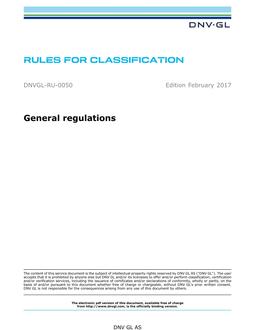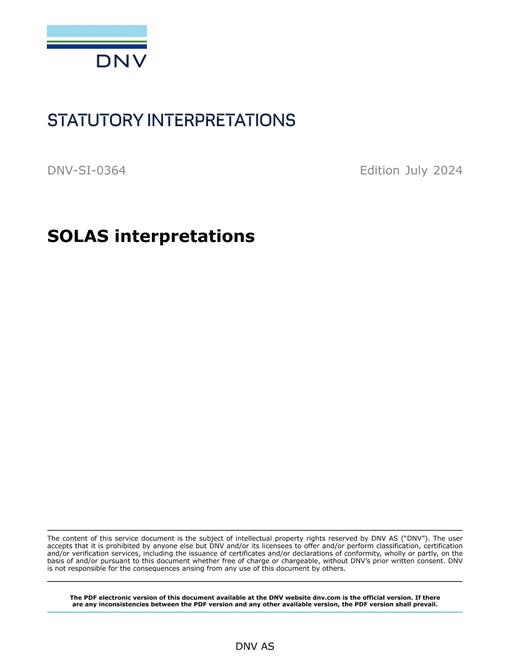-
-
Available Formats
- Availability
- Priced From ( in USD )
-
Available Formats
-
- Secure PDF 🔒
- Immediate download
- $57.00
- Add to Cart
-
- Printed Edition
- Ships in 1-2 business days
- $57.00
- Add to Cart
Customers Who Bought This Also Bought
-

DNV DNVGL-RU-0050
Priced From $57.00 -

DNV DNV-SI-0364
Priced From $57.00 -

DNV DNV-RU-SHIPS PART 1 CHAPTER 1
Priced From $57.00 -

DNV DNV-RU-SHIPS PART 4 CHAPTER 1
Priced From $57.00
About This Item
Full Description
Purpose
The purpose of the test is to determine the escort rating parameters (FS,t,v) as defined in the DNV Rules for Classification of Ships DNV-RU-SHIP Pt.5 Ch.10 Sec.11 [1.3.2].
In DNV-RU-SHIP Pt.5 Ch.10 Sec.11 [6.6], the limiting criteria for escort operations are determined by applying a heeling moment to the tug and ensuring there is a certain amount of reserve stability beyond the equilibrium state. Furthermore, the strength and capacities of towing line components will also need to be taken into consideration.
The only reliable means of determining the escort rating number are approved full scale sea trials where the towline force FW is carefully selected from within certain time periods during which heeling angle does not exceed the critical heeling angle value from the approved stability booklet, and thus ensures that the vessel is operating constantly during that period in a safe manner. This value for FW combined with the respective θ -β angles combinations should then be used to establish FS (θ and β as defined in DNV-RU-SHIP Pt.5 Ch.10 Sec.11 Figure 1). It is noted that any different loading condition than the one used for the sea trial will result in different FW, i.e. different escort ratings, and it is the responsibility of the party requesting the test to load the tug in such a way as to achieve a maximum escort rating number without exceeding stability and winch criteria from the rules.





